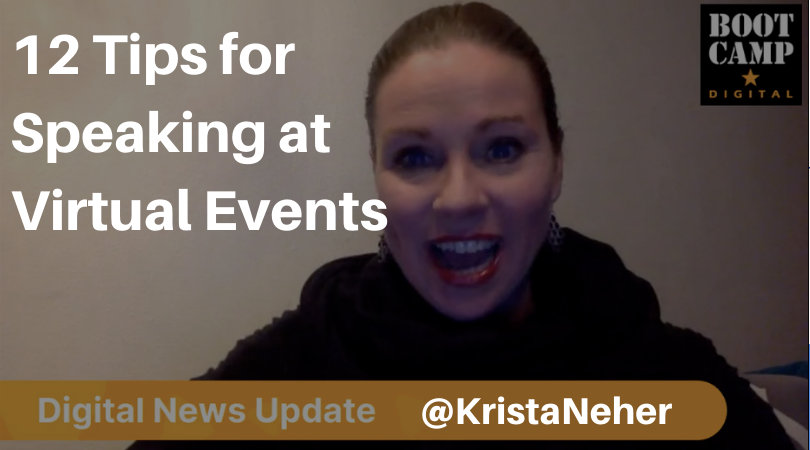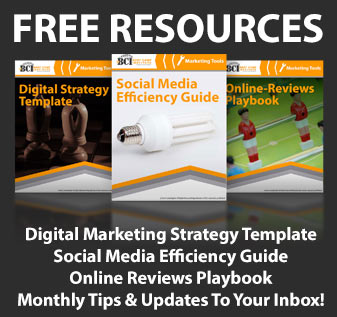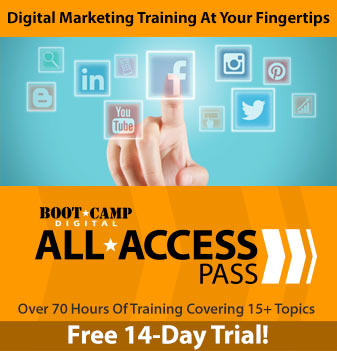
With recent health news more and more events are going virtual. Speaking at a virtual event isn’t as simple as an in-person event. There are a number of things to think about to maximize your presentation effectiveness.
I’ve been a speaker at over 1,000 virtual events and have honed my approach to continue to earn top ratings. I’ll share with you my top 10 tips.
- Build Up Your Energy
Speaking to an empty room is challenging – most speakers thrive from the energy and feedback in a room. You have to build up your energy before you get going to keep it high.
When I was a business coach for Dale Carnegie years ago they had a thing where you’d jump around and say “act enthusiastic and you’ll be enthusiastic”.
Seriously – get your energy level UP! - Look at the Camera, Not the Slides
It can be easy to look at the slides on your screen instead of the camera (since the slides are in-front of you) but stay focused on the camera. Make sure that you look directly at the camera as much as possible. Virtual speakers looking down are difficult to watch.
In case this wasn’t obvious, ALWAYS USE LIVE VIDEO OF THE SPEAKER. It makes a huge difference in retention rates and feedback from attendees and almost every platform allows it. - Pretend People are There
Seriously, pretend you have a live audience. Be conversational and engaging. It can be difficult in an empty room looking in to a screen, but keep in mind the real people on the other side.
I visualize an audience and try to imagine their reactions. It can be challenging to tell jokes to an empty room (nobody laughs) but keep in mind they are probably laughing at home. - Be Interactive
Look for ways to interact with and engage with the audience. Use chat and polls to ask questions and respond to them. I love doing this as it keeps people engaged and active.
Chat features are huge and they make the audience feel connected to each other (and you as a speaker). - Check Your Setup
I’ll write an additional post on technical setup for live video (or recorded for that matter) but be sure to do the following:
Check your surroundings in the shot. Aim for a clean background or a strategic one with books etc. You can buy a popup white screen if you don’t have anything appropriate.
Check your audio. You can get a better mic cheaply on Amazon to amp up your audio.
Get good lighting. Ring lights are also inexpensive and make a huge difference in your production quality.
Consider your framing. I put my computer on a stand so it is higher and sometimes use an external webcam to improve the angles and options. Look at how you frame yourself (how close), etc. - Know the Screen Setup
All software is different in terms of how it shows the live video vs. slides on a screen. Make sure that you know how the final stream will look. Sometimes you’ll need to adjust the slides as the live video may be on top of them. - Keep in Short
Live sessions (especially keynotes) can easily be 60 minutes or more, but online attention spans are shorter, plus it may be more difficult to engage an audience online vs. in-person.
Shorter sessions usually work better online so optimize for them. - Consider your Posture (or Even Stand Up)
Whether you sit or stand (yes, you can stand for a virtual event – just don’t walk around too much and know your framing) be aware of your posture.
Most people sit for virtual events so make sure your shoulders are dropped and you are sitting back and looking confident. - Handle Questions Smartly
In a live presentation questions are usually at the end. Online you have a few options. I find what works best is to have a moderator look at the questions as they come in and ask them immediately if they are relevant.
This can actually break up the presentation nicely and while it does interfere with the flow a little it is a nice change of pace for attendees.
Decide what works best for your presentation and let attendees and the moderator know upfront. - Close EVERYTHING on Your Computer
Make sure that everything that you aren’t using on your computer is closed. Open programs can not only slow down your computer, but they can pop-up annoying distractions. - KNOW YOUR SLIDES
In most virtual event software you’ll see your slides the same way the audience does. This means that you won’t see the speaker notes or the presenter view.
Know your slides well since you won’t see what’s next. - Record a Short Test
If you have the opportunity, record a short test for yourself to see how it looks. You may find you sway or move around. Maybe you touch your face. You could have a verbal tick.
Even if you don’t have these problems in person, virtual events are different so make sure you are ready.
I’ve presented over 1,000 times virtually across lots of different software and I’ve heard good and bad feedback. Hopefully these tips are helpful in making your next virtual speaking event a huge success.































Speak Your Mind